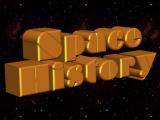This page is updated each day at 1300 GMT (8AM EST) when the newsletter is mailed to subscribers.
If you are not already a subscriber, you are welcome to enter your email address here to sign up to receive the Space History newsletter on a daily basis. Under no circumstances will we release your legitimate email address entered here to outside persons or organizations, and it will only be used for mailing the specific information you have requested.
| Enter your email address here: |
Unsubscribe instructions are included in every newsletter issue in case you decide you no longer wish to receive it.
Note: We record the IP address from which subscriptions are entered to help prevent SPAM abuses.
Race To Space
Someone will win the prize...
... but at what cost?
Visit RaceToSpaceProject.com
to find out more!
1731
Died, Brook Taylor, English mathematician (calculus of finite differences)
ref: en.wikipedia.org
1766
Born, Charles Macintosh, Scotland, patented waterproof fabric
ref: en.wikipedia.org
1800
Born, Charles Goodyear, inventor of the vulcanization of rubber. (Neither Goodyear nor his family was ever connected with the company named in his honor.)
ref: en.wikipedia.org
1891
Thomas Edison received US patent number 465,971 for "a means of transmitting signals electrically" (radio).
ref: www.rfcafe.com
1937
G. Kulin discovered asteroid #1442 Corvina & #2712; and K. Reinmuth discovered asteroid #1443 Ruppina.
1948
The First Report of the Secretary of Defense, James Forrestal, reported in an appendix that the United States had been engaged in research on an Earth satellite.
ref: books.google.com
1958
Born, Nancy Jane Currie-Gregg PhD (at Wilmington, Delaware, USA), Colonel US Army, NASA astronaut (STS 57, STS 70, STS 88, STS 109; over 41d 15.5h total time in spaceflight)

Astronaut Nancy L. Currie-Gregg, mission specialist, NASA photo S95-06514 (14 March 1995)
Source: NASA Image and Video Library
ref: en.wikipedia.org
We are going to run out of oil!
Visit SpacePowerNow.org
to help fix the problem.
SpacePowerNow.org - For Human Survival
Please help support our efforts by shopping from our sponsors.
This newsletter and its contents are Copyright © 2004-2025 by The L5 Development Group. All rights reserved. - Publication, in part or in whole, requires previous written permission. - Academic or personal-use citations must refer to http://L5Development.com as their source. Thank you for your cooperation.
Space History Department
Resources
The L5 Development Group Home Page
The L5 Development Group Keyword Access System
Space History for December 29, 2025 /
Webmaster /
Script last modified March 24, 2018 @ 8:43 am
Copyright © 2004-2025 by The L5 Development Group. All rights reserved.
Hosted by FKEinternet






